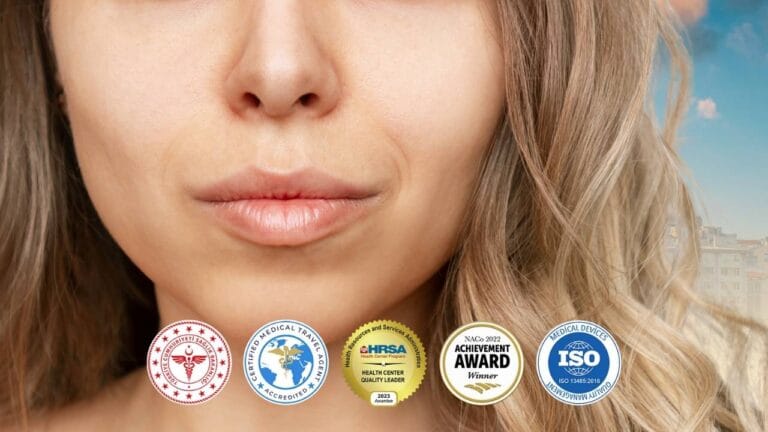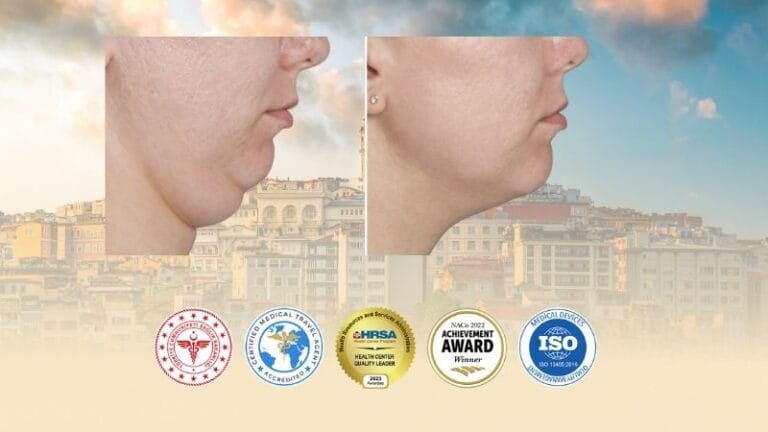Understanding the Deep Plane vs. SMAS facelift debate is key to choosing the right procedure for a natural, long-lasting result. Both techniques are highly effective, but they address aging in structurally different ways. This guide will clarify the technical differences and help you understand which may be right for you.
What is the SMAS? (The Key to All Modern Facelifts)
The SMAS (Superficial Musculoaponeurotic System) is a layer of muscle and fibrous tissue deep beneath the skin. This is not just a skin-pulling procedure. All modern, effective facelifts work by repositioning this deeper SMAS layer, which is what provides the actual lift. The skin is then re-draped without tension, which avoids the dreaded “wind-tunnel” look.
The Traditional SMAS Facelift (Plication or Imbrication)
In a traditional SMAS facelift, the surgeon first lifts the skin. Then, they lift and tighten the SMAS layer on top of the facial ligaments. This is typically done in one of two ways:
- SMAS Plication: The SMAS layer is folded onto itself and secured with sutures.
- SMAS Imbrication/SMASectomy: A strip of the SMAS is surgically removed, and the remaining edges are pulled together and sutured.
This technique is extremely effective for correcting sagging jowls and improving the neck.
The Deep Plane Facelift (Ligament Release)
The Deep Plane facelift is a more advanced technique. Instead of lifting the skin off the muscle, the surgeon works underneath the SMAS layer. By going into this “deep plane,” the surgeon can surgically release the key facial ligaments that tether the sagging tissues. This allows the entire “unit” of skin, fat, and muscle (SMAS) to be lifted and repositioned as one, without any tension. This is particularly effective for lifting the mid-face (cheeks) along with the jowls.
Clinic Care Center: Expert Warning
Patients often ask which facelift is ‘best.’ The truth is, the ‘best’ technique is the one that is right for your anatomy. The main difference is depth: a SMAS facelift lifts the muscle layer (SMAS) on top of the ligaments. A Deep Plane facelift goes under the muscle layer to release the ligaments. This allows a ‘ tension-free’ lift of the entire mid-face and lower-face as a single unit. However, a perfectly executed SMAS lift is far superior to a poorly executed Deep Plane lift. The surgeon’s expertise is the most important factor.
Deep Plane vs. SMAS: A Quick Comparison
| Feature | Traditional SMAS Facelift | Deep Plane Facelift |
|---|---|---|
| Technique Depth | Lifts and tightens the SMAS muscle layer. | Goes under the SMAS; releases ligaments. |
| Main Target Area | Excellent for jowls and neck. | Excellent for jowls, neck, and mid-face (cheeks). |
| Expected Result | Natural (when done well). | Very natural (lifts as one unit, less ‘pulled’ look). |
| Downtime | Generally 2-3 weeks. | Potentially more swelling initially, but similar 2-4 weeks. |
| Candidate Suitability | Good for most primary facelifts. | Excellent for heavy jowls, mid-face sagging. |
Potential Risks & Realistic Expectations
Both SMAS and Deep Plane are major surgical procedures and carry significant risks, including (but not limited to) infection, scarring, and facial nerve injury. There is no “guaranteed” outcome or “risk-free” procedure. Because the Deep Plane technique works closer to the facial nerves, it requires specialist expertise to perform safely. No technique can “stop” aging. The realistic expectation is a rejuvenation that resets the clock by 10-15 years. Longevity depends on your skin quality and lifestyle, not just the technique.
Frequently Asked Questions (FAQ)
Which facelift lasts longer, SMAS or Deep Plane?
Both are long-lasting (10-15 years), but many surgeons believe the Deep Plane lift has greater longevity as it repositions the deep structures.
What is the ‘wind-tunnel’ look and how do you avoid it?
This is an unnatural, “pulled” look caused by older techniques that only tightened the skin; modern SMAS and Deep Plane lifts avoid this.
Is a Deep Plane facelift more dangerous?
It is not “more dangerous,” but it is more technically complex and works closer to the facial nerves, requiring a highly specialized surgeon.
What is the best age for a facelift?
There is no “best age”; the best time is when you are bothered by sagging jowls and neck laxity, typically from the late 40s to 60s.
What is the difference between a SMAS lift and a mini-lift?
A mini-lift is a less extensive version of a SMAS lift, with a shorter scar, designed for patients with only mild jowling.
Does a Deep Plane facelift cost more?
Yes, it is often more expensive because it is a longer, more complex procedure that requires specialized expertise.
Can a Deep Plane lift fix my sagging cheeks (mid-face)?
Yes, one of the primary advantages of the Deep Plane technique is its powerful ability to lift the entire mid-face (cheek) area.
What is the recovery like for a Deep Plane facelift?
Recovery is similar to a SMAS lift (2-4 weeks), although some patients may experience more initial swelling due to the deeper dissection.
Which Technique is Right for Your Face?
The best facelift is not a brand name; it’s a customized procedure. The experts at Clinic Care Center are trained in all advanced facial rejuvenation techniques. Contact us today for an honest, expert evaluation to determine the safest and most effective plan for you.
Also Read:
Otoplasty
Chin Beautification
Cat Eyes
Eyebrow Lift
Eyelid Lift
Facelift Operation
Face Fat Injection
Forehead Lift
Neck Lift
Rhinoplasty
Buccal Fat Removal
Dimpleplasty
Lip Lift




